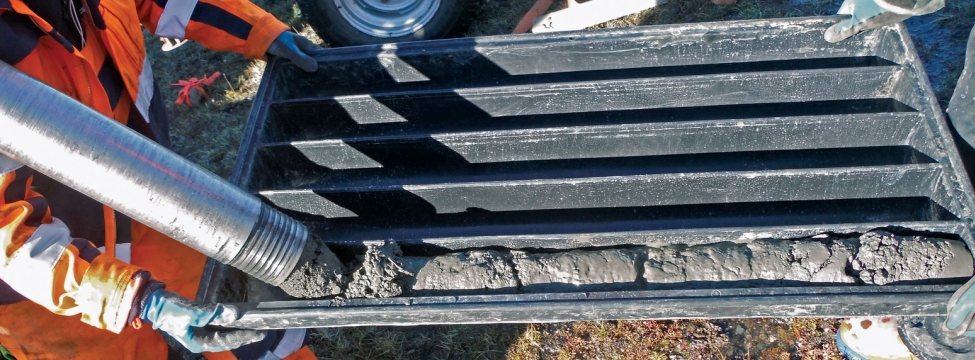To serve you better, our new website displays information specific to your location.
Please visit the site and bookmark it for future use.
You are here
SRK Kazakhstan ›Sonic drilling: where does it fit?
SRK News | Issue 57: Exploration Geology: Keys to success
SRK realised the full potential of sonic drilling in 2010 when they recommended the technique for an alluvial platinum project that was struggling to reconcile drilling results and mine production. Sonic drilling was ideal for this project, returning excellent recoveries in soft material while still being able to drill through large boulders in the alluvial profile. Sonic drilling enabled all the holes to reach the base of the alluvial profile. The results returned grades three times higher than the previous shell and auger drill sampling, and allowed the company to realise the full value from its exploration results. Since then, SRK has used sonic drilling across a wide variety of projects and developed extensive experience and understanding of the advantages and drawbacks of this technique.
Sonic drilling is primarily used to sample cover sequences, but unlike auger, aircore, RAB or RC drilling, it can recover a continuous core of intact sample. Returning high quality samples from near-surface unconsolidated or mixed materials is sonic drillings’ main niche. Coupling this sample quality with the ability to drill through hard capping rocks such as silcretes, basalt flows, or large boulders, and return excellent recoveries from underlying loose sediments, makes it ideal for many placer deposits and also mixed tailings or rock dumps.
Sonic drilling uses vibration of the drill string and drill bit for penetration, with the driller aiming to achieve maximum vibration (resonance) at the bit where surrounding particles are either fluidised (in loose materials) or fractured (in hard rock).
High penetration rates reduce with depth, meaning RC or RAB may become more economic with depths over ~30 m. Sonic holes can be drilled dry but drilling fluids are required through significant hard rock units and in deeper holes. The main drawback of the technique is the high relative cost, being approximately three times the cost of RAB, or one and a half that of RC. This said, sonic drilling can be ideal for remote areas where fixed logistics costs are already high, exploration seasons may be short, and excellent recovery and penetration rates are demanded.
The sonic drilling method is not the answer for every project but it holds the potential of achieving results that prove the feasibility of projects previously unsampled or considered unviable.


